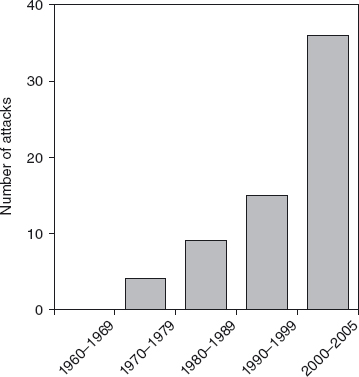DEVELOPING RISK METRICS TO ESTIMATE RISKS OF CATASTROPHIC BIOLOGICAL AND BIOTERRORIST EVENTS: APPLICATIONS TO THE FOOD INDUSTRY
HAMID MOHTADI
University of Wisconsin, Milwaukee, Wisconsin and University of Minnesota, Minneapolis, Minnesota
1 INTRODUCTION
This article develops a data-based probabilistic algorithm for food vulnerabilities based on a statistical method known as extreme value theory that focuses on the distributional properties of the maxima or minima of a sequence of random variables. For the purposes of developing this probability metric, the focus is on intentional incidents for which food is a potential vehicle. Such incidents are broadly categorized in the literature as chemical biological and radionuclear (CBRN) events. While the food supply chain can be attacked in a number of different ways, the focus on CBRN-materials is warranted since their deliberate introduction into the civilian population is biased toward targeting the food sector's infrastructure, which provides reach across a wide region. The data are complied under a prior research project [1] funded by the Department of Homeland Security. While this data focuses on intentional CBRN events, there is a second project currently underway that aims at generalizes this data and the approach to accidental food events as well.

FIGURE 1 Frequency of attacks on the food or water supply. Based on authors chronology ...
Get Wiley Handbook of Science and Technology for Homeland Security, 4 Volume Set now with the O’Reilly learning platform.
O’Reilly members experience books, live events, courses curated by job role, and more from O’Reilly and nearly 200 top publishers.

